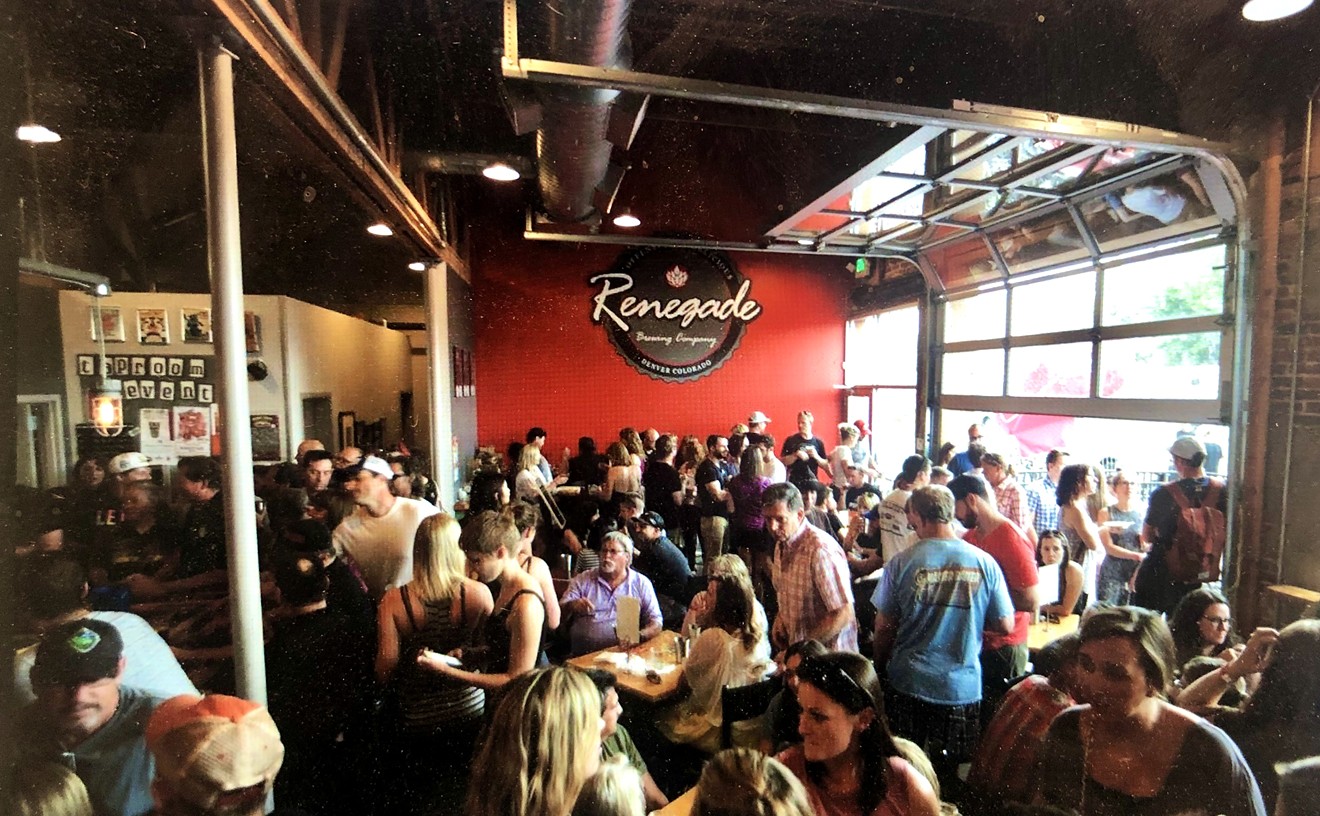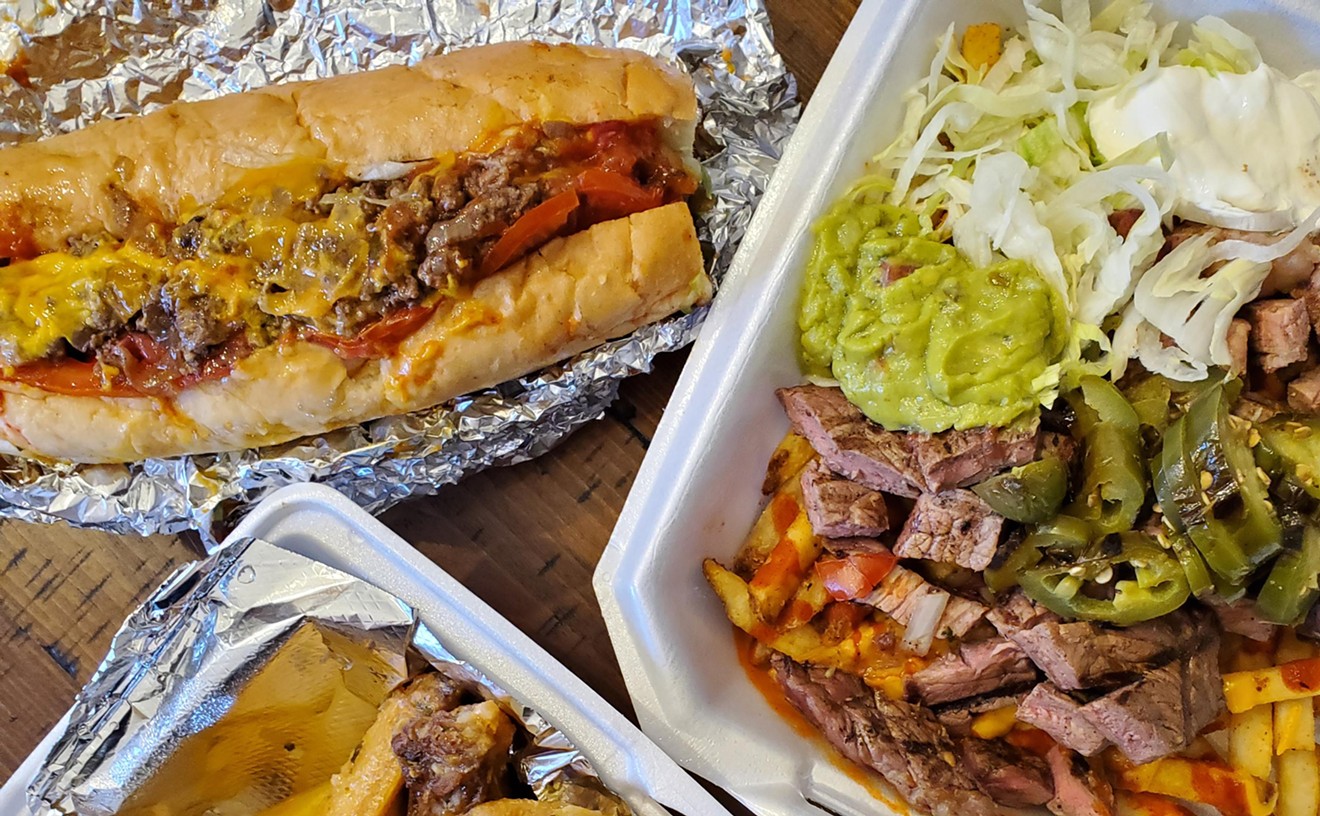Well, his departure came as a surprise to me. I put the review on hold and made plans to revisit the 9th Door on what, by all rights, should have been the worst possible night for a critic to show up: the first Monday after the departure of the chef. Cruel, I know, but had my meal been lousy, I would have simply given the crew another three (or six, or seven) months to get things straightened out before rendering my judgment, because that's the way things work in this industry. Big changes usually take time to work through, and every kitchen deserves a fair shake.
But as it turns out, the 9th Door was up to the challenge. With chef Ryan Kennedy (who's been Wahaltere's sous for more than two years, since they worked together at Moda) in place as exec, the changeover -- from the floor, anyway -- seemed flawless. On the worst of all possible days, the crew performed like troupers and served me a fantastic, multi-course meal with only one stumble: a daily special of bonito tuna sashimi, salmon tartare and some sort of fish jerky that -- in addition to being rather out of place on a tapas menu -- were not the most well-considered preparations. The plate disappeared from the specials board before seven o'clock, though, so others in the house must've really been enjoying it.
So congratulations are due the kitchen staff, and congratulations to Wahaltere also, who just got himself hitched to the former Sidra Smith in April. The wedding was held in Vegas at the Venetian so that -- in Wahaltere's words -- "Mister Thomas Keller could cook for me on my wedding night." (Keller has a restaurant, Bouchon, inside the Venetian, and was apparently behind the stoves that night.) In addition to the recent connubial fusion, Wahaltere has been busy consulting on the new club/restaurant Stallions at 9070 Maximus Drive near Park Meadows, helping the owners of Vegas's Club Seven expand into the Denver market by putting together a menu geared toward American international cuisine (Kobe burgers and wood-fired pizzas) and training the front-of-house staff for the past few weeks.
And soon he'll be opening a more permanent place of his own at 1035 Pearl Street in Boulder, right next door to The Kitchen. The as-yet-unnamed restaurant will be a riff on the success Wahaltere enjoyed at the 9th Door, with a menu structured around French, Spanish and Italian small plates -- amuses, tapas and cicchetti, in their respective tongues -- linked through a common base of ingredients. "You know, they all have the language, the same Latin roots. And they have the same ingredients -- the olive oil, the tomatoes, the meats," Wahaltere explains. "And because of this similarity, we will be able to play with it."
Each menu item will be an expression of the region in which it originated, and the kitchen will also offer one plat du jour every night -- an entrée that showcases the cuisines of areas as diverse as Morocco, Lebanon and France, but is tied to the theme by language and culinary influence.
The biggest influences on Wahaltere's personal development as a chef have come from Thomas Keller and Jean George Vongerichten -- Keller on the West Coast, Jean George on the East; Keller a deliberative master of the New American style, Jean George a wildly unconventional border-crosser with solid French roots. Neither chef ever really repeats himself, Wahaltere points out, but instead takes what's good from one of his restaurants and expands on it at a new address. And that's what he's planning for Boulder: a place inspired by the 9th Door, but not a carbon copy of it. "I know you keep the idea," Wahaltere says, his accent getting thicker as he grows more excited. "But why keep it exactly the same? There's only room for one 9th Door in Denver, and in Boulder, too. So why don't you have a place where you can bring even more? This will be more elaborate than just copycatting."
Wahaltere is still tossing around names, as well as starting dates. The restaurant will open no earlier than mid-September, October at the latest. But one thing is certain: He wants a place that is his, a place where he can do all the things he wants to do and serve the foods he knows best.
Tapas the town: Spain's second-best cultural export -- coming in right behind Penelope Cruz -- is the tapas menu. For those of you who've been in a coma for the past five years, or perhaps just extricated yourselves from the cult of Atkins, let me explain the origins of what is now referred to in the trade simply as "the Tapas Thing," as in, "Have you heard about so-and-so? Yeah, his last restaurant failed and now he's doing the Tapas Thing."
Centuries ago, bar owners in Spain and Portugal realized that if they served salty snacks to their patrons, said patrons were likely to drink more wine. And though, as far as I know, no one has ever accused a Spaniard of drinking too little, I've also never known a bar owner who could pass up an opportunity to make his clientele drink more.
In their original form, tapas were little servings of salted almonds (done at the 9th Door with nuts brought in from Marcona, Spain, and toasted in-house, but done better at Boulder's Frasca, where six dollars buys you a sampling of the best bridge mix ever -- perfectly spiced almonds, cashews and peanuts); olives (available at the 9th Door as aceitunas verdes alinadas); little croquettes of rice, meat, bread and mushrooms (which will be featured at Wahaltere's new place, drawing on the croquette di fungo of Venice); maybe a couple anchovies on salted bread (done best by Tyler Wiard at Mel's, who offers them as a special over a mustardy little bit of potato instead of bread, or at the 9th Door, where salty fingers of silvery fish are curled atop a cold omelette with sweet red peppers mounted on a round of crusty baguette); or a sliver of bacalao (not offered anywhere in Denver that I know of, but I don't imagine there's much demand for salt-cured codfish these days). Back in the day, these were all gratis to anyone who sat down in a Spanish barroom. But they were served on small plates, because no owner wanted to give away so much that his more impecunious customers could make a meal of such generosity. And the plates were always set on top of wine glasses, to keep the flies out.
(Although there's some argument as to the historic accuracy of this second assertion, it seems entirely sensible to me. After all, we're talking about a time before the advent of central air, when barrooms were kept as open to the breeze as possible, and with the breezes came the flies. Also, to a Spaniard -- to any chef, really -- an empty plate in a dining room is like a blank canvas in an art gallery -- both are wasted space just begging to filled with something.)
In America, this salty-snack-equals-increased-beverage-sales equation has been in use for a long time, taking the form of those sticky, communal bowls of nuts and pretzels placed on bar tops across the land; the chips and salsa that every Mexican joint, dive and hell-hole used to offer free to anyone who sat down; and the jars of pickled eggs that were once a fixture in the Eastern European barrooms of the industrial Northeast. The surprising thing is not that a tradition which began in one small area of the world thousands of miles away made the leap across the ocean so long ago (that just goes to prove my point that cooks have been stealing good ideas for as long as there have been good ideas to steal), but that it took otherwise bright capitalists so long to realize that -- with a little effort -- they could charge money for those same pretzels, chips and eggs.
A lot of money.
Hence, the recent explosion of places identified as tapas restaurants -- places that now collect serious green for stuff that once was given away free to stiffs and winos. Following fast on the success of a few of these restaurants, more traditional app-entrée-dessert houses made the switch to small-plate menus: Seeing that they could serve a regular entrée at one-third the portion size while still getting half the price was a no-brainer. And on top of this, being able to get three or four bucks for some spicy peanuts, housemade potato chips or a meatball? Frankly, I'm amazed that an entire generation of restaurateurs hasn't gone blind from the dollar signs in their eyes.
Lucky for us, there are still some good guys out there who understand that tapas are more than just shrunken mains. "These plates, they all come from somewhere," Wahaltere says. And he's right. A small plate -- whether you're calling it an amuse, cicchetti, tapas, an appetizer or (in the French) an entre -- has its own history and its own dynamic. For a small plate to work, it needs just as much care as any large plate, and it must also work in conjunction with other small plates on the menu. It ain't as easy as shaking down the rubes and collecting the money that falls out. Not when everyone and his brother is into the Tapas Thing.
Leftovers: 'Tis the season for summer menus to pop up all over the place. Two of these rollouts are particularly interesting, because they represent the first flights of chefs new to their posts.
At Strings (1700 Humboldt Street), executive chef Ed Kent (formerly of 240 Union), who took the place of Amy Vitale six weeks ago, has delivered a monster of a menu, adding about two dozen dishes to Strings' classic board of fare. Sautéed sweetbreads with lemon beurre noisette; oysters with lemon mignonette and tomato-horseradish gelée; a summer vegetable risotto with romesco sauce (that's getting trendy) and olive tapenade; half chickens with thyme and polenta -- I'm getting hungry just thinking about it.
Over at 1610 Little Raven Street, local boy John Calloway has taken over permanently as chef de cuisine at Zengo. That's his name splashed all over the new menu, rather than that of Alan Yu, who came in as a temporary fix -- chef Troy Guard had departed to open Nine75 in the former Moda space once bossed by Michel Wahaltere -- and now has gone on to another Richard Sandoval enterprise. Calloway has given Zengo's Latino-Asian fusion lineup an even finer Asian touch, revising the street-food image of Japanese gyoza by adding foie gras and a passion fruit-mustard sauce, and including chicken with fermented black bean sauce on the entrée board. And on the dessert side? Lychee panna cotta with pineapple salsa.
Finally, two weeks ago I reported on the untimely death of new Le Central chef Richard Ruiz, taken down by a heart attack while working at the ripe old age of 44. As bad as that was, the news gets worse: Ruiz had no life insurance. In order to help his widow, Caroline, and their two children, the human resources department at the Brown Palace (where Richard had been chef prior to taking the post at Le Central) has set up a fund through the Bank of Broadmoor and will be collecting donations for the next few weeks.
Dig deep, my friends. This guy was one of ours, and every little bit will help.










